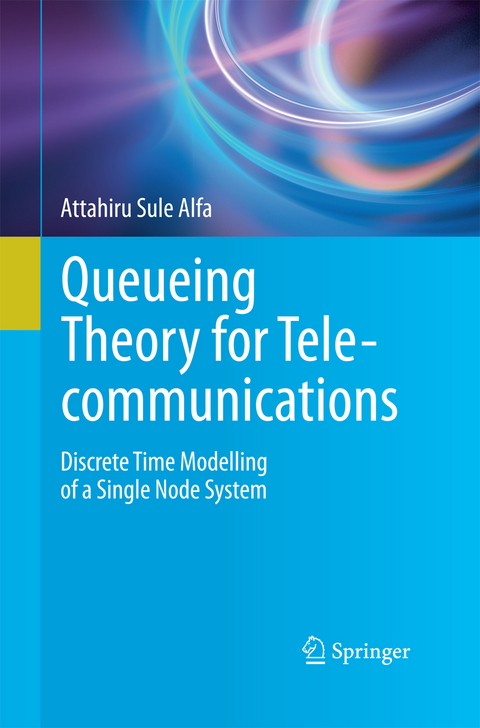
Queueing Theory for Telecommunications
Springer-Verlag New York Inc.
978-1-4899-8744-0 (ISBN)
Queueing theory applications can be discovered in many walks of life including; transportation,
manufacturing, telecommunications, computer systems and more. However, the most prevalent
applications of queueing theory are in the telecommunications field.
Queueing Theory for Telecommunications: Discrete Time Modelling of a Single Node System focuses on discrete time modeling and illustrates that most queueing systems encountered in real life can be set up as a Markov chain. This feature is very unique because the models are set in such a way that matrix-analytic methods are used to analyze them.
Queueing Theory for Telecommunications: Discrete Time Modelling of a Single Node System is the most relevant book available on queueing models designed for applications to telecommunications. This book presents clear concise theories behind how to model and analyze key single node queues in discrete time using special tools that were presented in the second chapter. The text also delves into the types of single node queues that are very frequently encountered in telecommunication systems modeling, and provides simple methods for analyzing them. Where appropriate, alternative analysis methods are also presented.
This book is for advanced-level students and researchers concentrating on engineering, computer science and mathematics as a secondary text or reference book. Professionals who work in the related industries of telecommunications, industrial engineering and communications engineering will find this book useful as well.
Attahiru S. Alfa is a professor and NSERC Industrial Research of Teletraffic in the Department of Electrical and Computer Engineering at the University of Manitoba. He obtained his BEng from Ahmadu Bello University, Nigeria, MSc from the University of Manitoba, Canada, and PhD from the University of New South Wales, Australia. One of his main teaching and research interests is in the area of discrete time queues with applications to telecommunication systems as well as manufacturing and transportation systems. Over the years he has made a number of significant contributions in the area of matrix-analytic methods .
1.0 Introduction.- 1.1 Description and examples of queueing systems.- 1.2 Applications of queueing models to real life problems.- 1.3 Historical development of queueing theory.- 2.0 Discrete time Markov chains (DTMC).- 2.1 DTMC.- 2.2. Focus on Quasi-birth-and-death processes ( a special class of infinite DTMC).- 3.0 Concept of a queueing system and characterization.- 3.1 Performance measures.- 3.2 Describing a queueing system and how it is characterized.- 3.3 The key parameters that define a queueing system.- 3.4 Performance measures of interest.- 3.5 Arrival and service processes.- 4. 0 Single Node Queues.- 4.1 Simple single server queue.- 4.2 Multi-server queues.- 4.3 Queues with feedback.- 4.4 Priority queues.- 4.5 Vacation queues.- 4.6 Queues with server breakdowns and repairs.- 4.7 Retrial queues.- 4.8 Queues with impatient customers.- 4.9 Queues with multiple customer types.- 5.0 Aspects of Single Node Queues.- 5.1 Tail behavior of single node queues.- 5.2 Mean-value analysis of queues.- 5.3 Transient analysis of queues.- 5.4 Queues with time-varying parameters.- 6. 0 Tools for analyzing queueing systems.- 6.1 MATLAB.- Index.
| Erscheint lt. Verlag | 19.10.2014 |
|---|---|
| Zusatzinfo | XIV, 238 p. |
| Verlagsort | New York |
| Sprache | englisch |
| Maße | 155 x 235 mm |
| Themenwelt | Informatik ► Grafik / Design ► Digitale Bildverarbeitung |
| Mathematik / Informatik ► Informatik ► Theorie / Studium | |
| Mathematik / Informatik ► Mathematik ► Angewandte Mathematik | |
| Mathematik / Informatik ► Mathematik ► Computerprogramme / Computeralgebra | |
| ISBN-10 | 1-4899-8744-4 / 1489987444 |
| ISBN-13 | 978-1-4899-8744-0 / 9781489987440 |
| Zustand | Neuware |
| Haben Sie eine Frage zum Produkt? |
aus dem Bereich


